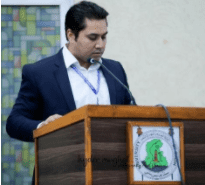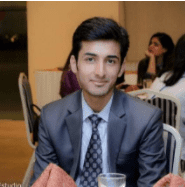Opinion article of the International Institute for Global Strategic Analysis (IIGSA)
By Dr. Masood-ur-Rehman Khattak and Mr. Sarmad Ali Khan
Global security architecture continues to evolve rapidly based on traditional and non-traditional components. On one hand, the induction of technology and non-kinetic options has transformed the dynamics of the military due to which countries rely more on non-confrontational approaches. On the other hand, the defence acquisitions of many countries has witnessed an upward trajectory despite avowal of demoting arms race.
It is also interesting to note that military flashpoints, conflict zones and areas of competition as a whole have snowballed in the last two decades. Some analysts associate these developments with the war on terror while others consider them as part and parcel of the emergent multipolar world order. One of the most activated geostrategic regions in the world includes South Asia where three nuclear-armed countries are located and have multiple bilateral disputes. This article will discuss how South Asia transmits volatility because of competing powers, confrontational scenarios and threat of a nuclear war. It will analyze why the defence spending of India continues to increase. In doing so, it would also be debated whether Indian defence spending is justifiable at the cost of the country’s development.
New Delhi has remained one of the most proactive and important regional players when it comes to its diplomatic engagement, economic development and military approach. The country has outlined a vision to become a global engine of power and not remain confined to South Asia. In addition to increase in its political engagement, India has also joined many international security arrangements which are both bilateral and multilateral – such as Russia-India Defence Deal and Quadrilateral Security Dialogue – to enhance its ambit of military operations. This approach enables the country to achieve multiple strategic objectives such as aligning its foreign policy goals with favorable countries, acquire military equipment, technology and logistics support from member-countries and dominate its adversaries.
The signing of the S-400 missile system – mobile long-range surface-to-air missile (LR-SAM) – deal between Moscow and New Delhi in 2018 is being executed now as per Indian Foreign Secretary, Harsh Vardhan Shringla’s statement. Head of Russian military cooperation agency, Dmitry Shugayev, confirmed the news stating that the $5.5 Billion deal’s first batch arrived in India in December 2021. According to Indian government authorities, the S-400 air defence missile systems are being deployed in the Punjab sector to curtail threats from Beijing and Islamabad. In the next phase, deployment would start on eastern front in which the Indian Air Force would take the lead. Indian military and security analysts consider execution of the deal as a victory for the country as it “makes Pakistan and China tremble with” fear.
Effectiveness of S-400’s utility for Indians has been largely questioned. Justin Bronk, research fellow at Royal United Services Institute (RUSI) and Petr Topychkanov, senior researcher at Stockholm International Peace Research Institute) SIPRI have opined that S-400 is unlikely to cover the defence needs as hyped by India. The air defence missile systems can not only be spoofed but are also vulnerable to electronic warfare. Despite such staunch technical and academic findings, India concluded the deal with Russia. Moreover, these flawed patterns are seen in other cases as well which have put a burden on the overall defence expenditure of India raising it to $71 billion in FY2019-2020 and again spiking it to over $75 billion in FY2020-2021. The defence expenditure of New Delhi is expected to rise more for the current fiscal year as many other defence deals are in place.
Furthermore, the United States (U.S.) warned India that it would face economic sanctions as per Countering America’s Adversaries Through Sanctions Act (CAATSA) if the country acquires S-400 missile systems from Russia. This has, however, not stopped Indian ambitions to become a hegemon, counter its arch-rival China and dominate Pakistan militarily. The Indian government has negated all its claims of becoming a development state in essence of providing job opportunities, basic necessities, and equal human rights to its population only to emerge as a regional and extra regional military power.
Various aspects can be discussed to analyze whether Indian hefty defence spending is justifiable when compared to its spending for development of the country. According to a WaterAid report titled, “Out of Order: The State of the World’s Toilets”, 732 million people in India do not have access to lavatories. Similarly, poor sanitation conditions spread infectious diseases like diarrhea due to which more than 60,000 children (below five years of age) die annually in India. Although the current government poured a lot of economic and technical resources into the Digital India program but did not allocate funds for the 680 million Indians who live below the poverty line. In addition, a 40% gap was recorded between current status and the empowerment line vis-à-vis drinking water, sanitation, and health care. In addition, 58% of Indian wealth was held by 1% of the country’s elite.
This shows Indian determination of becoming a leading military power in the region by only focusing on the security dynamics while putting the issues of development, basic human rights etc. on the backburner. Based on this titled approach, the Indian population is not only deprived of basic necessities but also a snowballing wave of freedom movements in India is picking up pace. At the international level, Indian engagement with its immediate neighbors has followed a provocative course of action invoking instability in the region. Many of the international scholars and circles from within the country have highlighted this tunneled view of India stating that the country overemphasizes on its security needs as opposed to reality. In doing so, the aforementioned aspects are overlooked and not considered which shows that Indian claims of being the world’s largest democracy are not true since democracy is the government of people, by the people and for the people.
About the Authors:
Dr. Masood-ur-Rehman Khattak
 Dr. Masood-ur-Rehman Khattak is Director Center for India Studies in the International Institute for Global Strategic Analysis (IIGSA). He is also working as an Assistant Professor in the Department of Politics and International Relations at International Islamic University, Islamabad.
Dr. Masood-ur-Rehman Khattak is Director Center for India Studies in the International Institute for Global Strategic Analysis (IIGSA). He is also working as an Assistant Professor in the Department of Politics and International Relations at International Islamic University, Islamabad.
Earlier, he served in the Japanese Embassy as a Political & Security Advisor. Dr. Khattak has also worked in South Asian Strategic Stability Institute Islamabad for three Years as a Research Fellow. He possesses more than 12 years of Research/Teaching experience in the field of International Relations, Strategic Studies, with special emphasis on Nuclear Deterrence in South Asia, Terrorism and Counter-Terrorism/Insurgency in Afghanistan and Pakistan.
Mr. Sarmad Ali Khan
 Mr. Sarmad Ali Khan is the Founder of IIGSA. He is associated with Global Foundation for Cyber Studies and Research, USA as a Policy Researcher. Earlier, Mr. Khan worked at South Asian Strategic Stability Institute (SASSI) University as a Research Fellow.
Mr. Sarmad Ali Khan is the Founder of IIGSA. He is associated with Global Foundation for Cyber Studies and Research, USA as a Policy Researcher. Earlier, Mr. Khan worked at South Asian Strategic Stability Institute (SASSI) University as a Research Fellow.
He has multiple research publications to his credit ranging from book chapters, research papers, and technical reports to white papers. Mr. Khan has been actively engaged with various international think tanks notably SIPRI, TASAM and technical institutes such as BI-MGT.
His areas of research include Cyberspace Strategic Competition between U.S and China, Transforming Deterrence Stability in South Asia and Emergence of New Security Alliances in Asia Pacific. He holds an M.Phil Degree in International Relations from Bahira University, Islamabad Campus.
(The views expressed in this article belong only to the authors and do not necessarily reflect the views of World Geostrategic Insights).







